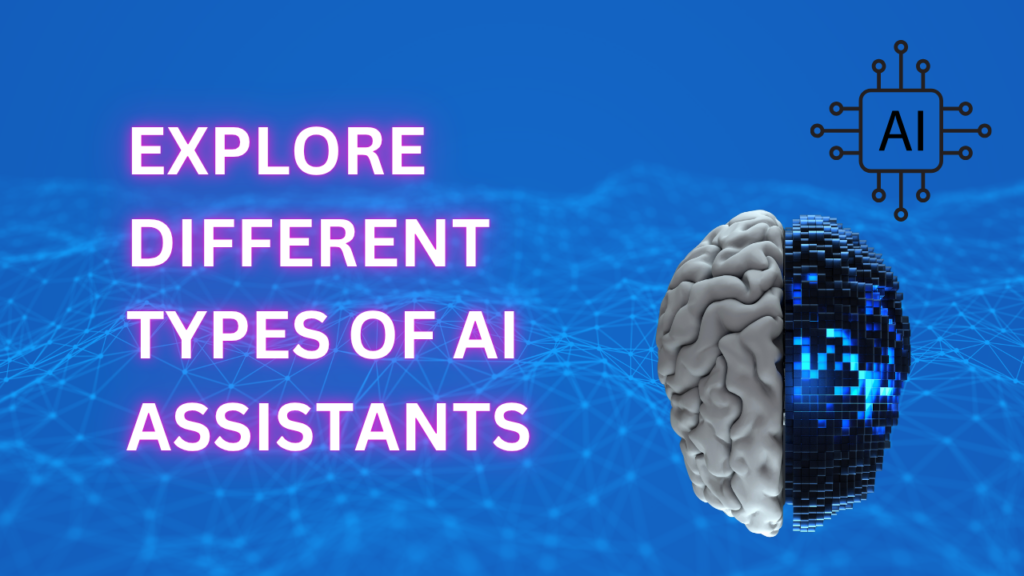
Not long ago, using technology meant navigating menus or waiting for support. Now, a simple voice command or a quick message can schedule a meeting, track an order, or pull insights from complex data. That’s the power of AI assistants—digital helpers changing the way we work and live.
An AI assistant is a smart software tool. It understands natural language, processes requests, and responds instantly. From Siri playing your favorite song to a chatbot answering questions, AI assistants are everywhere.
But not all assistants are alike. Each serves a different purpose—personal tasks, workplace productivity, or industry-specific needs. Take GALE by Tollanis Solutions, for example. It works as an always-on guest concierge for theme parks, showing how AI can create personalized experiences.
In this guide, we’ll explore the main types of AI assistants and how they work, so you can find the one that fits your needs best.
What Is an AI Assistant?
An AI assistant is a smart digital helper. It understands your requests and gives real-time responses. Unlike old systems that require strict commands, it can interpret natural language, learn from past interactions, and adapt to your needs.
The brains behind it come from technologies like natural language processing (NLP), which helps it understand speech; machine learning (ML), which lets it improve over time; and conversational AI, which makes interactions feel more human. This is why a chatbot can answer customer questions instantly, or a voice assistant can respond to spoken commands right away.
There are different types of AI assistants, each built for specific tasks. Picking the right one can make everyday routines easier, help teams work more efficiently, or transform how businesses deliver customer service.
AI Assistant vs Chatbot
It’s easy to confuse an AI chatbot, an AI voicebot, and a full AI assistant, but they aren’t the same thing. Each has its own scope and purpose.
| Feature | AI Chatbot | AI Voicebot | AI Assistant |
| Primary Mode | Text-based conversations | Voice-based interactions | Text + voice (multi-modal) |
| Scope | Handles predefined queries and tasks | Executes spoken commands | Manages multi-step tasks and workflows |
| Context Awareness | Limited; treats each chat separately | Limited to voice commands | Remembers context across sessions |
| Learning Ability | Basic or rule-based | Improves speech recognition | Learns continuously, adapts to user needs |
| Examples | Website support bots, WhatsApp bots | Siri, Alexa | Microsoft Copilot, GALE by Tollanis |
In short: AI chatbots are task-focused, AI voicebots excel at hands-free convenience, and AI assistants provide a more intelligent, adaptable experience across personal and business use cases.
Types of AI Assistants
AI assistants come in many forms, each built for a specific purpose. Some make daily life easier, others boost workplace productivity, and some focus on specialized tasks. Knowing the types of AI assistants can help you pick the right one for your goals.
1. Personal AI Assistants
These assistants help with everyday tasks and fit seamlessly into your devices like smartphones and smart speakers.
Examples: Siri, Alexa, Google Assistant
Use Cases:
- Setting reminders
- Checking the weather
- Controlling smart home devices
- Quickly finding information
2. AI Voice Assistants / Voicebots
Voice assistants respond to spoken commands and hold natural conversations. They’re perfect for hands-free tasks and quick, real-time help.
Examples: GALE by Tollanis, Alexa, Google Assistant, GoVocal AI (India)
Use Cases:
- Scheduling tasks by voice
- Operating smart devices
- Guiding visitors in public venues
- Accessing information instantly
3. AI Chatbots
Chatbots work through text. They handle a high volume of questions efficiently, making them ideal for customer support and online assistance.
Examples: ChatGPT, customer support bots
Use Cases:
- Answering FAQs
- Assisting with online purchases
- Supporting customers through chat
4. Enterprise AI Assistants
Enterprise assistants are built for business environments. They automate repetitive tasks, manage workflows, and provide insights to improve team efficiency.
Examples: Microsoft Copilot, Amazon Q
Use Cases:
- Summarizing reports
- Scheduling meetings
- Organizing workflows
- Analyzing business data
5. Specialized AI Assistants
These assistants are designed for specific industries or roles. They bring domain knowledge to tasks that need extra expertise.
Examples & Use Cases:
- Healthcare: Scheduling appointments, sending reminders, assisting patients
- Sales & Marketing: Managing leads, optimizing campaigns, analyzing performance
- Coding: Suggesting code, debugging, speeding up development (e.g., GitHub Copilot)
- HR: Streamlining onboarding, answering employee questions, automating admin tasks
By understanding these types of AI assistants, you can choose the one that fits your needs—whether for personal convenience, business efficiency, or specialized support.
Conclusion
AI assistants are reshaping how we live and work. From personal helpers to chatbots, voice assistants, and enterprise tools, each type is designed to make tasks simpler and workflows more efficient.
The right AI assistant can speed up daily routines, streamline business processes, and provide personalized support when you need it.
Understanding the different types helps you choose the best fit for your needs—whether for personal convenience, professional productivity, or specialized tasks.
Explore next-generation AI assistants to make work and life smarter, faster, and easier.